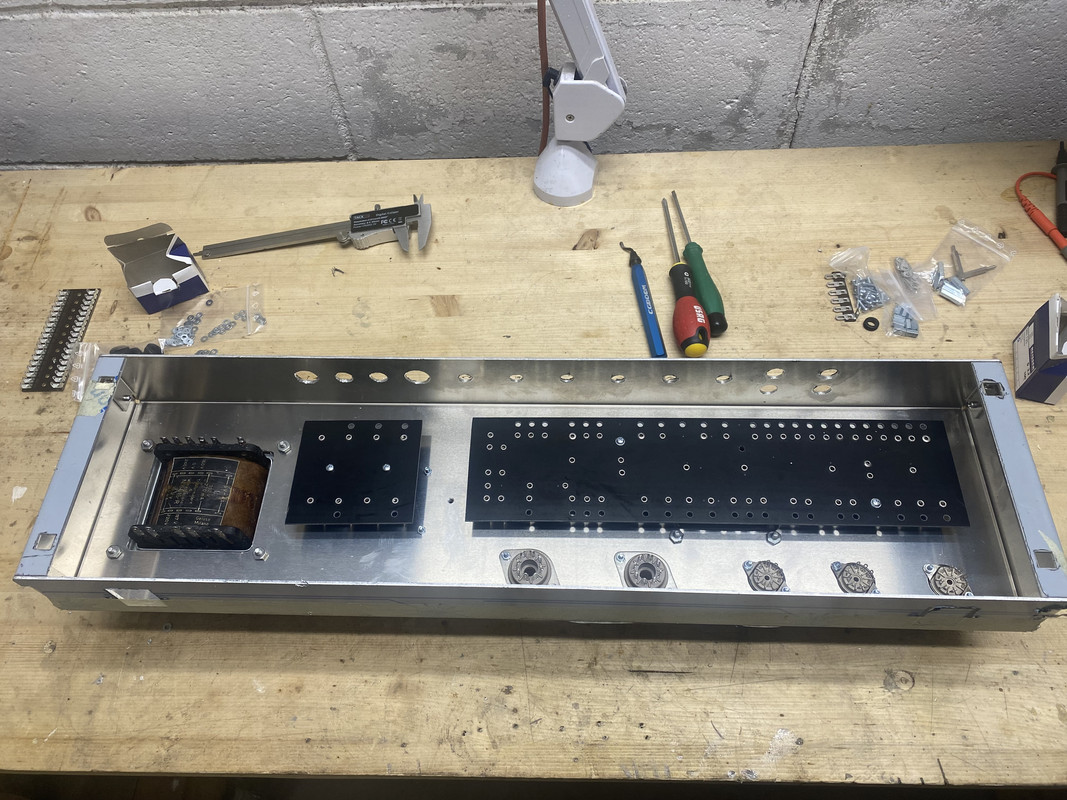pietro.castelli
Active Member
- Joined
- Aug 18, 2021
- Messages
- 95
- Reaction score
- 190
Hi Folks,
after my first tube amp build based on a Ceriatone kit - LINK - I've been growing the desire for a more challenging build, one that would start from scratch and allow me to study the behavior of a well-known circuit from the inside out. Fellow member @Marcomel79 has also been educating me on the art of repurposing and upcycling old tube devices.
A few weeks ago, the perfect opportunity presented itself when I was gifted with the remains of an old Italian PA amplifier from my trusted luthier, a Geloso G1-1040/A from the late '60s that he has been stashing away for a conversion project that never happened.
It's a class AB, push-pull amplifier relying on a pair of EL34 for an estimated output of 40W.
It has a solid state rectifier and the preamp is made by 2XECC83 and an ECC81.


However it is missing all the tubes, the chassis is heavily oxidized and pitted, and the circuit has been butchered with questionable repairs and modifications:

after my first tube amp build based on a Ceriatone kit - LINK - I've been growing the desire for a more challenging build, one that would start from scratch and allow me to study the behavior of a well-known circuit from the inside out. Fellow member @Marcomel79 has also been educating me on the art of repurposing and upcycling old tube devices.
A few weeks ago, the perfect opportunity presented itself when I was gifted with the remains of an old Italian PA amplifier from my trusted luthier, a Geloso G1-1040/A from the late '60s that he has been stashing away for a conversion project that never happened.
It's a class AB, push-pull amplifier relying on a pair of EL34 for an estimated output of 40W.
It has a solid state rectifier and the preamp is made by 2XECC83 and an ECC81.


However it is missing all the tubes, the chassis is heavily oxidized and pitted, and the circuit has been butchered with questionable repairs and modifications:

















